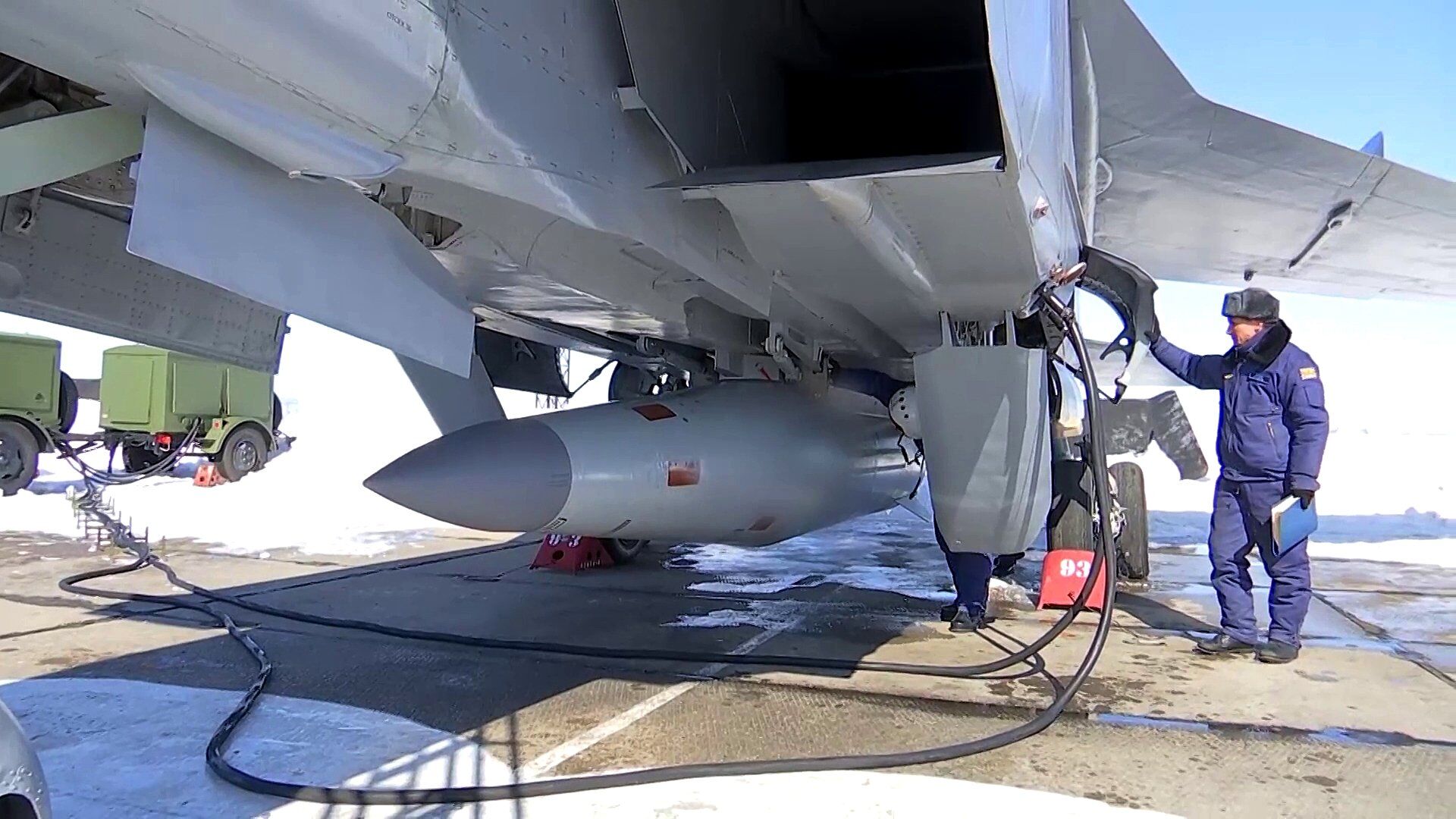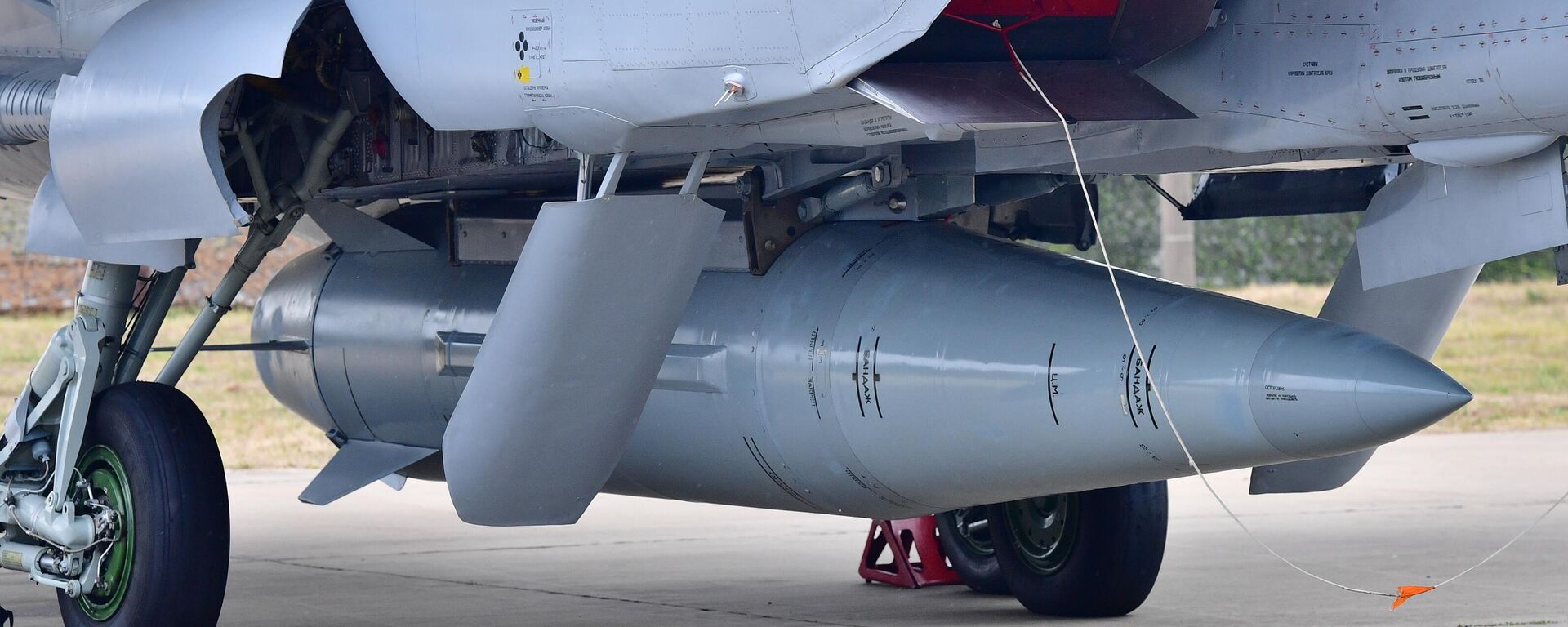https://sputnikglobe.com/20231219/lightning-strike-what-is-known-about-russias-kinzhal-hypersonic-missile-1115678625.html
Lightning Strike: What is Known About Russia's Kinzhal Hypersonic Missile?
Lightning Strike: What is Known About Russia's Kinzhal Hypersonic Missile?
Sputnik International
The Russian military continues to use Kinzhal hypersonic missiles in the special military operation. What's the Kinzhal and why does it give Russia's rivals the shivers?
2023-12-19T13:03+0000
2023-12-19T13:03+0000
2023-12-19T13:03+0000
us
sputnik explains
vladimir putin
russia
ukraine
kiev
ukrainian armed forces
nato
glonass
patriot
https://cdn1.img.sputnikglobe.com/img/106243/32/1062433211_0:0:1920:1080_1920x0_80_0_0_9f8c2d1572b692318c3c89f5726b5c5c.jpg
The Ukrainian and Western press reported Russia's precision air strikes on December 14 in the vicinity of Starokonstantinov in the Khmelnitsky region, where a Ukrainian military airfield is located. Russian missiles were also fired in the direction of the Sumy and Kiev regions, as per the speaker of Ukraine's Air Force Yury Ignat.According to Ignat, the attacks were conducted by MiG-31K fighters armed with Russia's state-of-the-art Kinzhal hypersonic missiles.What's the Kinzhal Hypersonic Missile?The Kh-47M2 Kinzhal ("dagger") is an air-launched hypersonic ballistic missile capable of carrying nuclear or conventional warheads. It boasts a reported range of 1,500 - 2,000 kilometers and speeds of up to Mach 10 (12,250 kilometers per hour). If launched from the Tupolev Tu-22M long-range strategic strike bomber, the Kinzhal's range could be extended to 3,000 km.The high-precision missile's probable circular deflection does not exceed one meter, while an inertial navigation system (INS) with the possibility of adjustment from the GLONASS system or from AWACS aircraft is used to aim at the target.In general, the hypersonic complex was designed to destroy especially protected stationary assets behind enemy lines.When Did the World Learn About the Missile?Russian President Vladimir Putin lifted the veil of secrecy surrounding the Kinzhal during a speech to members of the Federal Assembly of the Russian Federation on March 1, 2018.What Tests Did the Kinzhal Undergo?The Kinzhal hypersonic missile was tested in different environments. One of the tests was carried out in mid-November 2019 in the Arctic region, as Russian military industry sources told the press at the time.The missile was launched from the MiG-31K taking off from Olenegorsk airbase on the Kola Peninsula. The weapon successfully hit a target at the Pemboy training ground, about 60 kilometers from Vorkuta, traveling around 1,300 km and reaching a speed of Mach 10.Why Was a MiG-31K Chosen to Carry the Kinzhal?An aircraft is used as the "first stage" of the Kinzhal rocket, lifting it into the stratosphere and accelerating it to supersonic speed.One might wonder why the MiG-31 was picked as the Kinzhal's carrier. After all, the aircraft was designed not as a missile carrier but as a fighter-interceptor. Per Russian military observers, the crux of the matter is that the MiG-31 boasts high speed and long flight range. The aircraft's speed is 2,500 km/h (maximum – 3,000 km/h), while the flight range reaches up to 3,000 km. Besides, the warplane can reach a service ceiling of 20,600 meters.Meanwhile, it was reported in September that the Kinzhal hypersonic missile was first used by the Su-34 fighter-bomber in the zone of the special military operation, meaning that the weapon could be carried by various Russian aircraft.When Was the Kinzhal Used in Combat?The Kinzhal was first used in the zone of the special military operation on March 18, 2022, to destroy the underground military arsenal of the Ukrainian Armed Forces in the Ivano-Frankivsk region. The rocket managed to penetrate the concrete walls of the well-fortified underground weapons storage and blow it up.On March 9, the Kinzhal hit and destroyed a Ukrainian underground bunker located near Lvov at a depth of 120 meters that served as the headquarters of the Ukraine Armed Forces and NATO. Reportedly, the strike killed 200 officers and generals.In May, the Russian Air Forces knocked out the US-made Patriot air defense system with a Kinzhal missile in Kiev. Footage of the strike appears to indicate that the MIM-104 Patriot fired a whopping 32 missiles to intercept the Kinzhal but missed the target. Eventually, the Russian hypersonic missile smashed the US-made air defense system.Can Kinzhal be Intercepted?International observers have repeatedly admitted that existing air defense systems are not capable of efficiently intercepting hypersonic missiles. Still, the Ukrainian press claimed that its military managed to bring Russia's wonder weapon down on several occasions, providing zero evidence to back these claims up.On the heels of uncorroborated reports of the Patriot intercepting a Kinzhal in Ukraine in May, the US-made system was swiftly destroyed by the hypersonic missile in question, busting the earlier claims and embarrassing the Ukrainian leadership.In December, the Ukrainian press once again claimed that the nation's military had brought the hypersonic missile down, presenting no proof. Russian military observers explained the case, referring to a recent interview given by Ignat to a Ukrainian video channel.Ignat complained about a new trick adopted by the Russian military to overwhelm the Ukrainian air defenses. According to him, the Russian military uses both real missiles and fake targets.Per Russian military observers, the Ukrainian military are chasing ghost targets and believe that they managed to shoot them down, at a time when real hypersonic missiles routinely accomplish their mission in the combat zone and behind the enemy lines.
https://sputnikglobe.com/20230919/russia-celebrates-gunsmith-day-with-record-missile-production-1113492974.html
https://sputnikglobe.com/20231218/why-russias-mystical-mig-31-fighters-strike-fear-across-ukraine-1115655555.html
https://sputnikglobe.com/20230517/unstoppable-kinzhal-one-us-made-patriot-cracked-up-more-to-come-1110424287.html
https://sputnikglobe.com/20231005/russian-kinzhal-iskander-missiles-to-make-short-work-of-german-air-defenses-in-ukraine-1113957627.html
russia
ukraine
kiev
Sputnik International
feedback@sputniknews.com
+74956456601
MIA „Rossiya Segodnya“
2023
News
en_EN
Sputnik International
feedback@sputniknews.com
+74956456601
MIA „Rossiya Segodnya“
Sputnik International
feedback@sputniknews.com
+74956456601
MIA „Rossiya Segodnya“
russia, kinzhal hypersonic missile, russian hypersonic weapons, mig-31, mig-31k fighter jet, russia uses kinzhal hypersonic systems in ukraine, su-34 used to launch the kinzhal missile
russia, kinzhal hypersonic missile, russian hypersonic weapons, mig-31, mig-31k fighter jet, russia uses kinzhal hypersonic systems in ukraine, su-34 used to launch the kinzhal missile
Lightning Strike: What is Known About Russia's Kinzhal Hypersonic Missile?
The Russian military continues to use Kinzhal hypersonic missiles in the special military operation. What's the Kinzhal and why does it give Russia's rivals the shivers?
The Ukrainian and Western press reported Russia's precision air strikes on December 14 in the vicinity of Starokonstantinov in the Khmelnitsky region, where a Ukrainian military airfield is located.
Russian missiles were also fired in the direction of the Sumy and Kiev regions, as per the speaker of Ukraine's Air Force Yury Ignat.
According to Ignat, the attacks were conducted by MiG-31K fighters armed with Russia's state-of-the-art Kinzhal hypersonic missiles.
What's the Kinzhal Hypersonic Missile?
The
Kh-47M2 Kinzhal ("dagger") is an air-launched hypersonic ballistic missile capable of carrying nuclear or conventional warheads. It boasts a reported range of 1,500 - 2,000 kilometers and speeds of up to Mach 10 (12,250 kilometers per hour). If launched from the Tupolev Tu-22M long-range strategic strike bomber, the Kinzhal's range could be extended to 3,000 km.
The high-precision missile's probable circular deflection does not exceed one meter, while an inertial navigation system (INS) with the possibility of adjustment from the GLONASS system or from AWACS aircraft is used to aim at the target.
The Kinzhal is an aero-ballistic system: having been dropped from an aircraft it accelerates to hypersonic speed and then follows an "unpowered" ballistic trajectory. The flight path of the 500-kilogram warhead is controlled by both aerodynamic control surfaces and shunting micromotors which allow the missile to carry out unpredictable maneuvers. Per Russian military observers, the Kinzhal is almost "non-interceptable" due to its high speed, maneuverability, and homing capabilities.
In general, the hypersonic complex was designed to destroy especially protected stationary assets behind enemy lines.
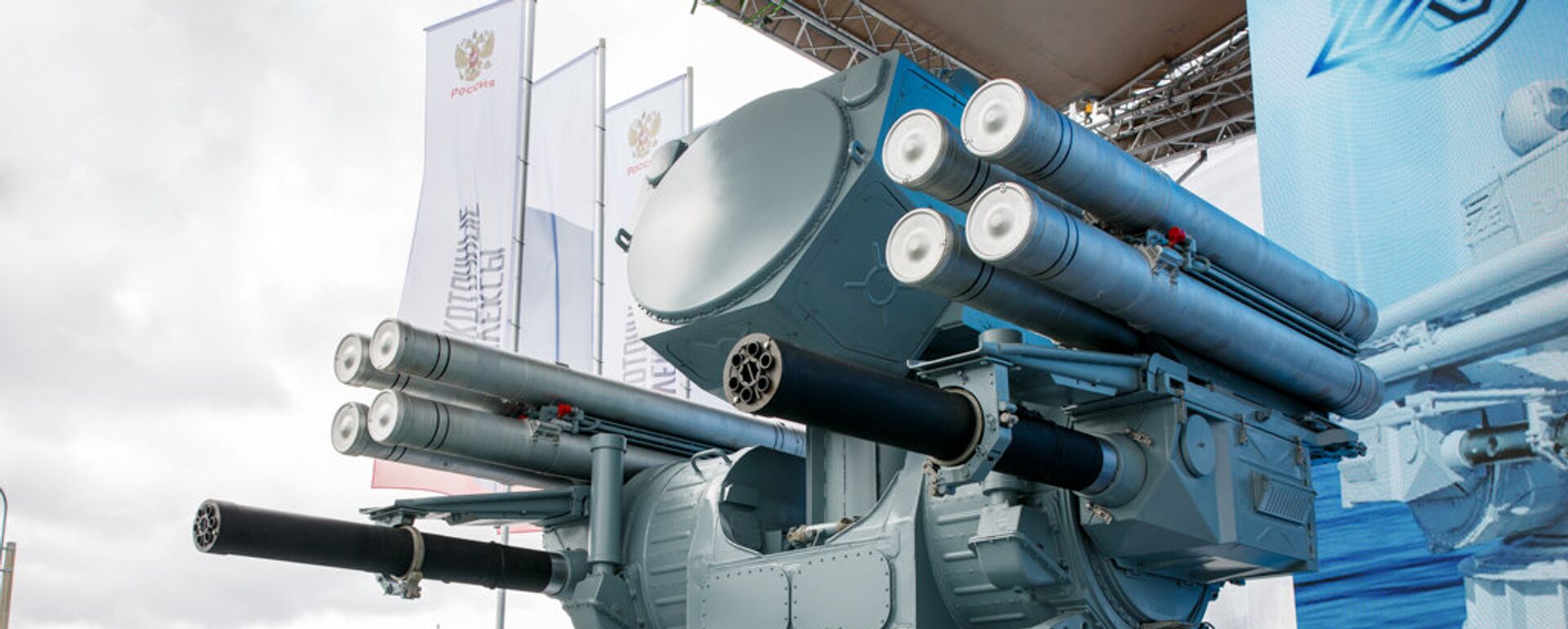
19 September 2023, 14:54 GMT
When Did the World Learn About the Missile?
Russian President Vladimir Putin lifted the veil of secrecy surrounding the Kinzhal during a speech to members of the Federal Assembly of the Russian Federation on March 1, 2018.
"The unique flight-tactical characteristics of the high-speed carrier aircraft make it possible to deliver the missile to the drop point in a matter of minutes," Putin said. "At the same time, a missile flying at hypersonic speeds, ten times the speed of sound, also maneuvers in all parts of the flight path."
What Tests Did the Kinzhal Undergo?
The Kinzhal hypersonic missile was tested in different environments. One of the tests was carried out in mid-November 2019 in the Arctic region, as Russian military industry sources told the press at the time.
The missile was launched from the MiG-31K taking off from Olenegorsk airbase on the Kola Peninsula. The weapon successfully hit a target at the Pemboy training ground, about 60 kilometers from Vorkuta, traveling around 1,300 km and reaching a speed of Mach 10.
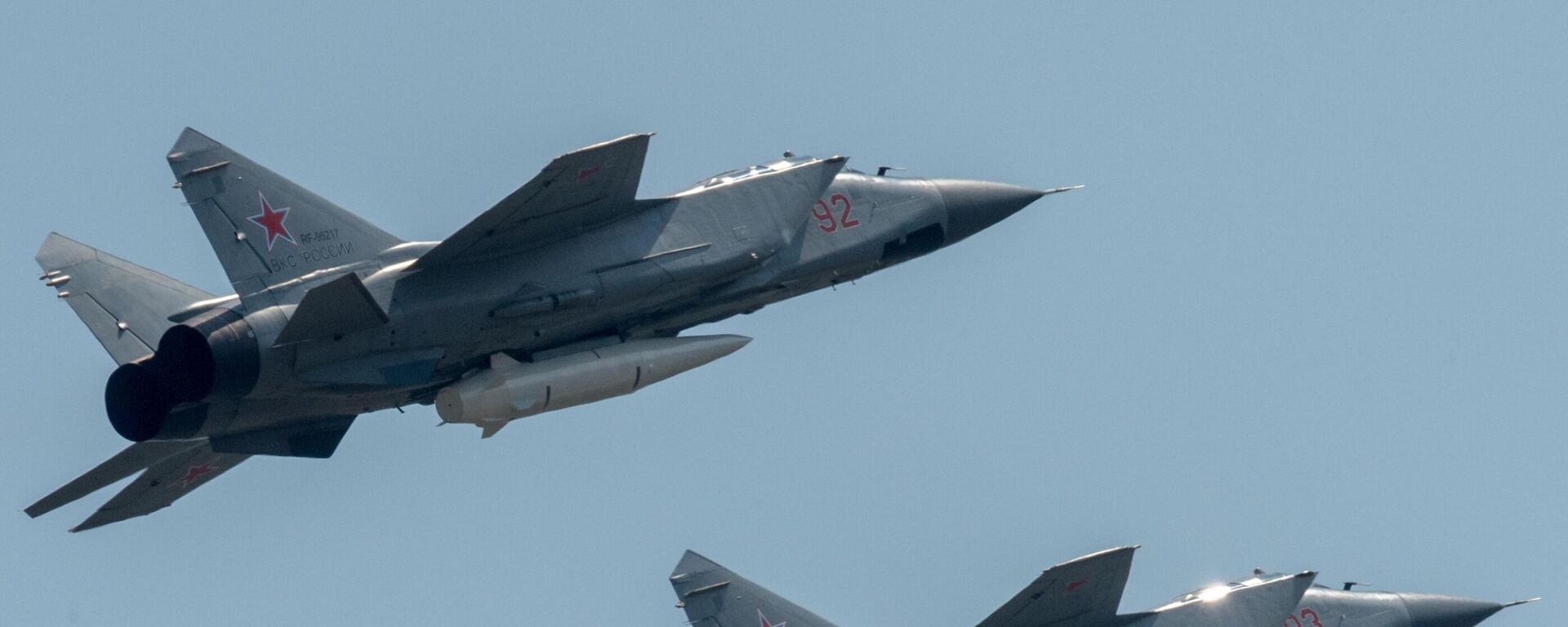
18 December 2023, 07:19 GMT
Why Was a MiG-31K Chosen to Carry the Kinzhal?
An aircraft is used as the "first stage" of the Kinzhal rocket, lifting it into the stratosphere and accelerating it to supersonic speed.
One might wonder why the MiG-31 was picked as the Kinzhal's carrier. After all, the aircraft was designed not as a missile carrier but as a fighter-interceptor. Per Russian military observers, the crux of the matter is that the MiG-31 boasts high speed and long flight range. The aircraft's speed is 2,500 km/h (maximum – 3,000 km/h), while the flight range reaches up to 3,000 km. Besides, the warplane can reach a service ceiling of 20,600 meters.
Meanwhile, it was reported in September that the Kinzhal hypersonic missile was first used by
the Su-34 fighter-bomber in the zone of the special military operation, meaning that the weapon could be carried by various Russian aircraft.
When Was the Kinzhal Used in Combat?
The Kinzhal was first used in the zone of the special military operation on March 18, 2022, to destroy the underground military arsenal of the Ukrainian Armed Forces in the Ivano-Frankivsk region. The rocket managed to penetrate the concrete walls of the well-fortified underground weapons storage and blow it up.
On March 9, the Kinzhal hit and destroyed a Ukrainian underground bunker located near Lvov at a depth of 120 meters that served as the headquarters of the Ukraine Armed Forces and NATO. Reportedly, the strike killed 200 officers and generals.
In May, the Russian Air Forces knocked out the US-made Patriot air defense system with a Kinzhal missile in Kiev. Footage of the strike appears to indicate that the MIM-104 Patriot fired a whopping 32 missiles to intercept the Kinzhal but missed the target. Eventually, the Russian hypersonic missile smashed the US-made air defense system.
Can Kinzhal be Intercepted?
International observers have repeatedly admitted that existing air defense systems are not capable of efficiently intercepting hypersonic missiles. Still, the Ukrainian press claimed that its military managed to bring Russia's wonder weapon down on several occasions, providing zero evidence to back these claims up.
On the heels of uncorroborated reports of the Patriot intercepting a Kinzhal in Ukraine in May, the US-made system was swiftly destroyed by the hypersonic missile in question, busting the earlier claims and embarrassing the Ukrainian leadership.
In December, the Ukrainian press once again claimed that the nation's military had brought the hypersonic missile down, presenting no proof. Russian military observers explained the case, referring to a recent interview given by Ignat to a Ukrainian video channel.
Ignat complained about a new trick adopted by the Russian military to overwhelm the Ukrainian air defenses. According to him, the Russian military uses both real missiles and fake targets.
"This is what is called the work of the enemy’s electronic warfare equipment, they set up barriers, that is, electromagnetic pulses that our radar systems see as targets which are similar to Kinzhals in terms of flight parameters. That is, in speed and so on," said Ignat.
Per Russian military observers, the Ukrainian military are chasing ghost targets and believe that they managed to shoot them down, at a time when real hypersonic missiles routinely accomplish their mission in the combat zone and behind the enemy lines.
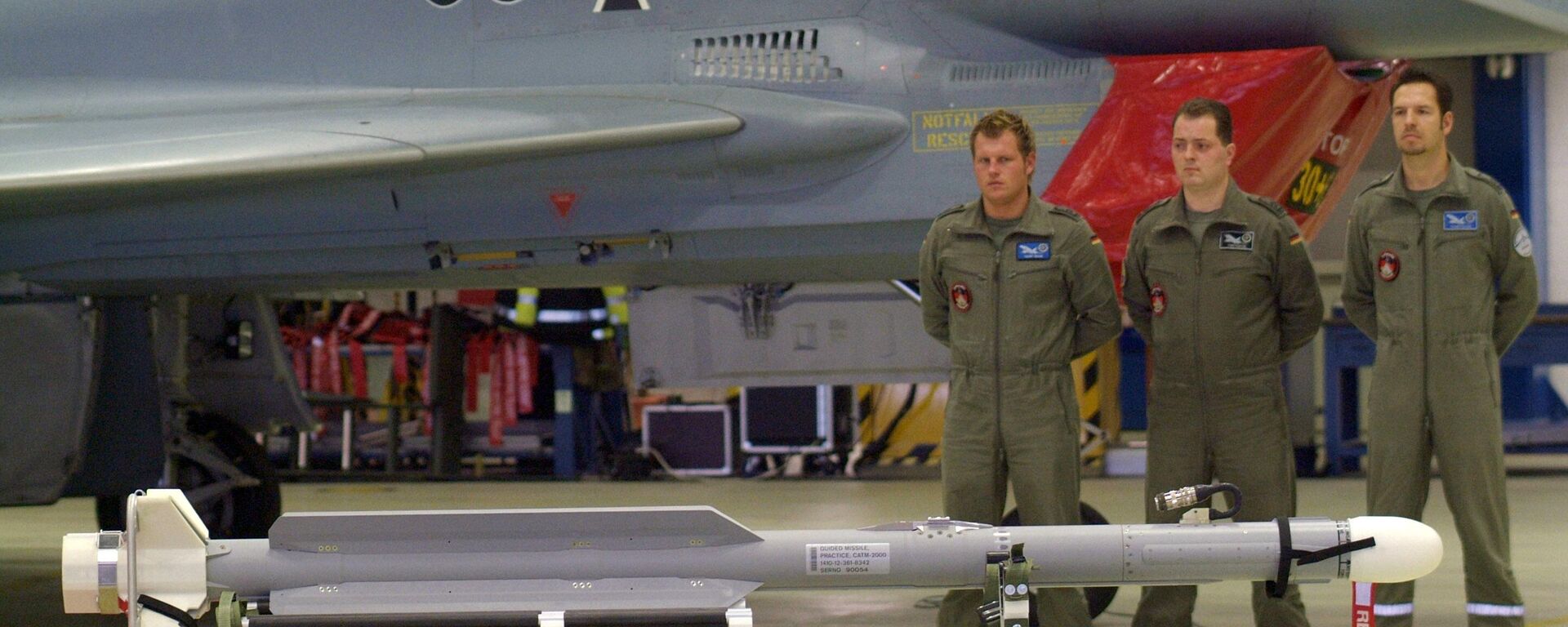
5 October 2023, 15:31 GMT
